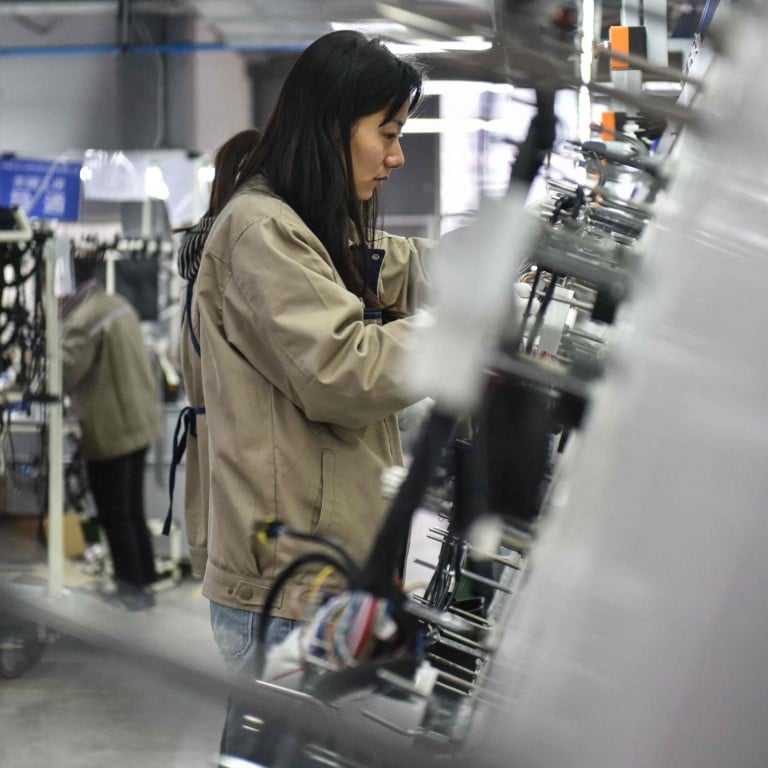
China inflation: disappointing price indicators cast shadow on target, fuel calls for swift policy easing
- Consumer price index grew by 0.1 per cent, while factory-gate prices fell for 18th straight month, as low demand and overcapacity cloud recovery prospects
- Unlike many Western countries, including the US, that have been seeing high levels of inflation, China has experienced minimal growth since a year ago
Further disappointing levels of inflation in China have cast a growing shadow over its recovery trajectory, adding urgency to calls for monetary easing to stave off the risk of deflation and invigorate economic growth.
China’s consumer price index (CPI) grew by a lower than expected 0.1 per cent year on year in March, the National Bureau of Statistics said on Thursday.
The subdued figure came as China faces a persistent property slump and sluggish job market, which have eroded consumers’ willingness to spend and dampened market expectations.
“Beijing is very unlikely to attain its CPI target of 3 per cent for 2024, and the final figure may hover around 1 per cent,” said Larry Hu, chief China economist at Macquarie Capital.
China has yet to step into deflation – deflation suggests an overall downward economic spiral
The low CPI reading underscores Beijing’s need to speed up interest rate cuts, Hu added, pointing out that doing so could help alleviate the mortgage burden on residents and help allocate more funds towards consumption.
And despite some relaxation in real estate policies from last year, Beijing also needs bolder moves to tackle its property crisis, as the moves have not been enough to address the financial woes of some developers, Hu added.
“China has yet to step into deflation – deflation suggests an overall downward economic spiral – but China’s current trouble is insufficient domestic demand,” he said.
“On the contrary, its external demand remains relatively robust, fuelled by strong consumer demand, such as the US’.”
Unlike many Western countries that have been seeing high levels of inflation, China has experienced minimal growth in its CPI since April last year, with the gauge growing by only 0.2 per cent in 2023.
On Wednesday, the United States reported 3.5 per cent year-on-year CPI growth.
Beijing’s policymakers have viewed high inflation as a persistent threat, regularly setting a goal of capping annual CPI growth at 3 per cent over the past decade.
“China is currently grappling with insufficient demand, which requires a shift of policy mindset to accept moderate price increases,” said Yang Weimin, a former planning official who worked in the policymaking body of the Office of Central Financial and Economic Affairs Leading Group from 2011-18.
“A moderate price rise foresees robust demand. Once its growth is outpaced by income expansion, the livelihood will actually improve,” he added, according to the 21st Century Business Herald earlier this week.
China’s price data shows the challenges in consumer sentiment and preliminary signs of overcapacity
As persistent oversupply would likely keep inflation low, China’s CPI is expected to remain at an average of 0.5 per cent over the next couple of years, according to analysts at Capital Economics.
Elsewhere, China’s producer price index (PPI) – which measures the cost of goods at the factory gate – declined by 2.8 per cent year on year last month, compared with a fall of 2.7 per cent in February.
It marked the 18th consecutive month of decline, as subdued market demand has kept the pressure on manufacturers.
Meanwhile, China’s core inflation, which excludes volatile food and energy prices, grew by 0.6 per cent in March year on year, compared with 1.2 per cent growth in February.
“China’s price data shows the challenges in consumer sentiment and preliminary signs of overcapacity, especially in the industrial sectors,” said Gary Ng, a senior economist at Natixis Hong Kong.
China’s economic growth may not disappoint the market, but it is not enough to absorb the supply, he said, adding he expects CPI to slowly improve and remain positive in the coming months.
However, PPI would likely be stuck in contraction throughout 2024, Ng added.
“More Chinese firms will lower prices due to fiercer competition, which also implies that export prices will decline together. This does not bode well for easing geopolitical tensions,” he said.

